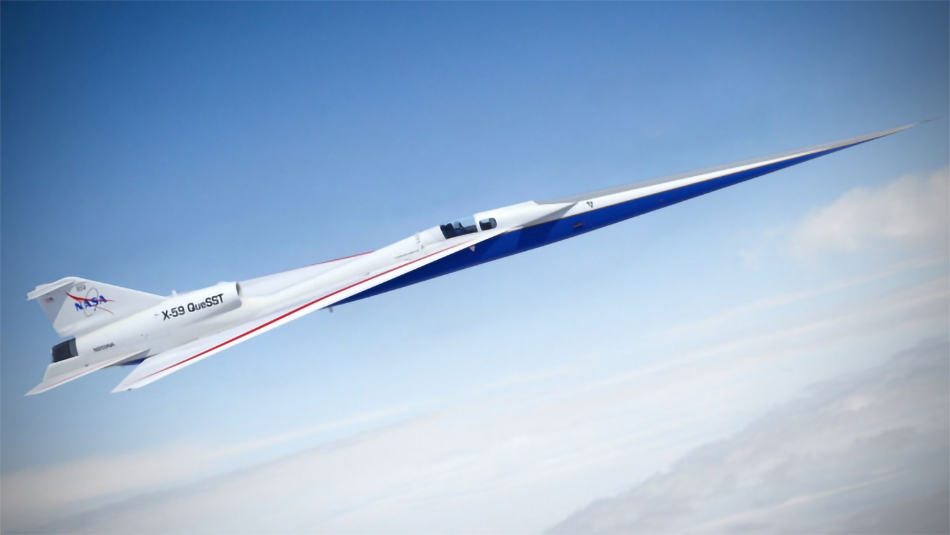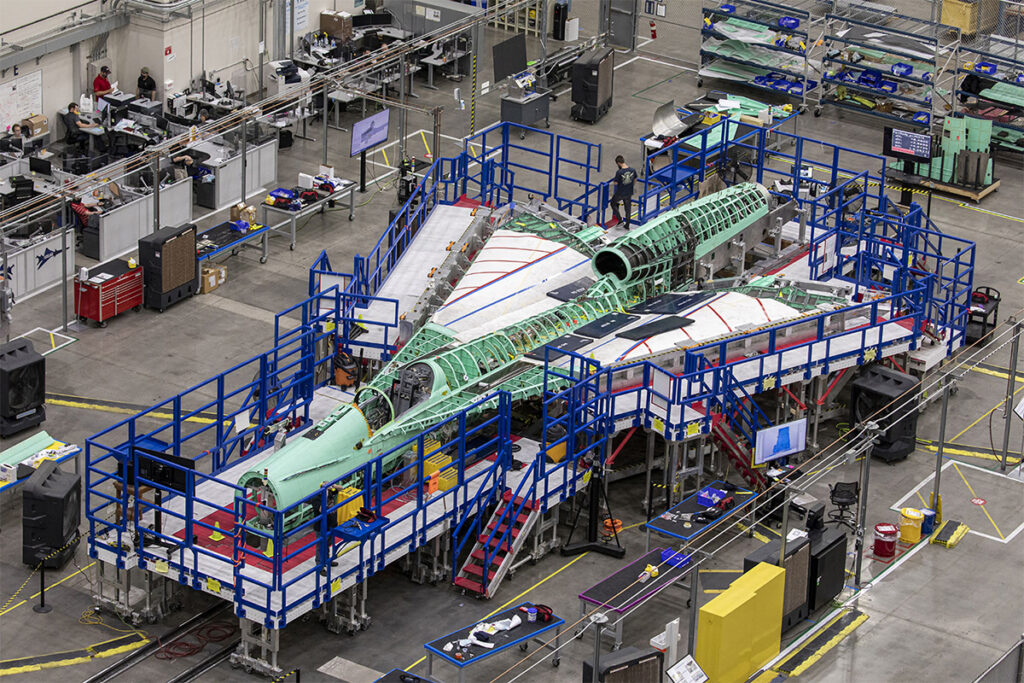X-59 Supersonic Jet of NASA Nears 2022 Test Flight
NASA showed an initial preview of its X-59 Quiet SuperSonic Technology (QueSST) aircraft in December 2019. The supersonic plane has an extremely long nose, a unique design to produce quieter noise. It’s taking shape quickly and is about to take its first test flight in 2022.
The aircraft construction is at the Lockheed Martin Skunk Works division in Palmdale, California, known for its advanced aircraft designs. For example, the Skunk Works engineers developed the U-2, F-117 Nighthawk, SR-71 Blackbird, F-35 Lightning, and F-22 Raptor, which are surveillance and stealth aircraft the Air Force uses.
X-59 QueSST
The latest supersonic aircraft of NASA can cruise at Mach 1.4, which is beyond the speed of sound. Interestingly, its sonic boom is lower than the sound of the thump made by a car door when you close it. Thus, the starting boom of the jet cannot startle the people on the ground.
In their preview video, NASA showed the assembly of the jet’s different parts, from the fuselage to the 29.5 foot-wide wing, which holds part of the aircraft’s control systems and fuel systems.
NASA chief engineer for the Low Boom Flight Demonstrator project, Jay Brandon, said that it now looks like an airplane instead of a collection of different parts, as the Lockheed technicians and engineers assemble the major components of the aircraft, which started production in 2018.
Precision fitting
Parts of an aircraft should fit precisely, and the demand for precision is higher considering that the X-59 is a supersonic aircraft. The engineers achieve the highest level of accuracy through the features of the structure. They can self-locate the parts and employ laser projections to verify the perfect fit. In addition, the use of pre-drilled, full-size fastener holes reduced the time for the assembly while achieving the required alignment.

Features
The X-59 project costs $247.5 million. The development of the project is set to finish this year. Test flights are scheduled for 2022. When fully assembled, the supersonic jet will be 94 feet long. It will have a wingspan of 29.5 feet. The maximum takeoff weight is 32,300 lbs. X-59 will have a cruise speed of Mach 1.4 or 940 mph when it reaches 55,000 feet.
What reduces the explosive sound of the sonic boom is the jet’s nose, which is 30-foot long. The aircraft’s fuselage contains the cockpit and the forward-facing window, called the eXternal Vision System (XVS). It is not exactly a window as you know it. Instead, the window consists of two cameras, with each camera mounted above and below the aircraft’s nose.
According to NASA, if their design is successful, it might be rolled out for commercial flights and the U.S. military. The X-59 is a single-pilot aircraft that will not carry any other passengers. However, NASA says that aircraft manufacturers may incorporate X-59’s technology into their aircraft designs.
The quietest supersonic jet
The Concorde was banned in 2003 because of the noise it makes. The X-59, on the other hand, is the quietest supersonic aircraft today. This is because the designers and engineers of NASA and Lockheed Martin went back to the basic principles of aerodynamics when they designed the X-59 to create a simple yet highly advanced aircraft.
Technically, a supersonic jet will create a sonic boom because it is faster than the speed of sound. Flying beyond Mach 1 speed, the plane pierces the waves of compressed air, which in turn generate shock waves that travel down to earth, creating a booming sound called the sonic boom. In addition, a supersonic jet’s big body makes a louder sound as it passes through the waves of compressed air.
To minimize the shockwaves, the engineers and designers made X-59’s body very sleek. They designed an aircraft with a very long nose and long body, distributing the variation in shape across the plane’s length.
Innovations
As mentioned, X-59 will have a two-camera eXternal Vision System (XVS) setup because the design does not allow the installation of a cockpit window. But according to NASA test pilot Nils Larson, who is testing the plane using the X-59 simulator, the setup is even better than having a window since he can see more from the display that is not possible to see with a cockpit window.
Moreover, the supersonic jet will have an F-15 fighter jet as an escort during the test flight. The fighter jet will act as a chase plane that will measure the shockwaves the aircraft produces during midflight. This is going to be very impressive as NASA will capture shockwave images with schlieren photography.
In 2023, NASA will conduct acoustic validation of the aircraft by installing several microphones across a 30-mile-long stretch at the Mojave Desert to measure its sonic thump. Then, in 2024, the X-59 will fly over selected towns and cities all over the U.S. to measure the various communities’ responses.
The objective of NASA in building the X-59 is to prove that a supersonic aircraft can fly without the dreaded sonic boom. Once it passes all the tests, it can open the way for aircraft manufacturers to incorporate NASA and Lockheed Martin’s technology for commercial planes and reintroduce supersonic flights. According to David Richardson of Lockheed Martin, it could be possible by 2035.
